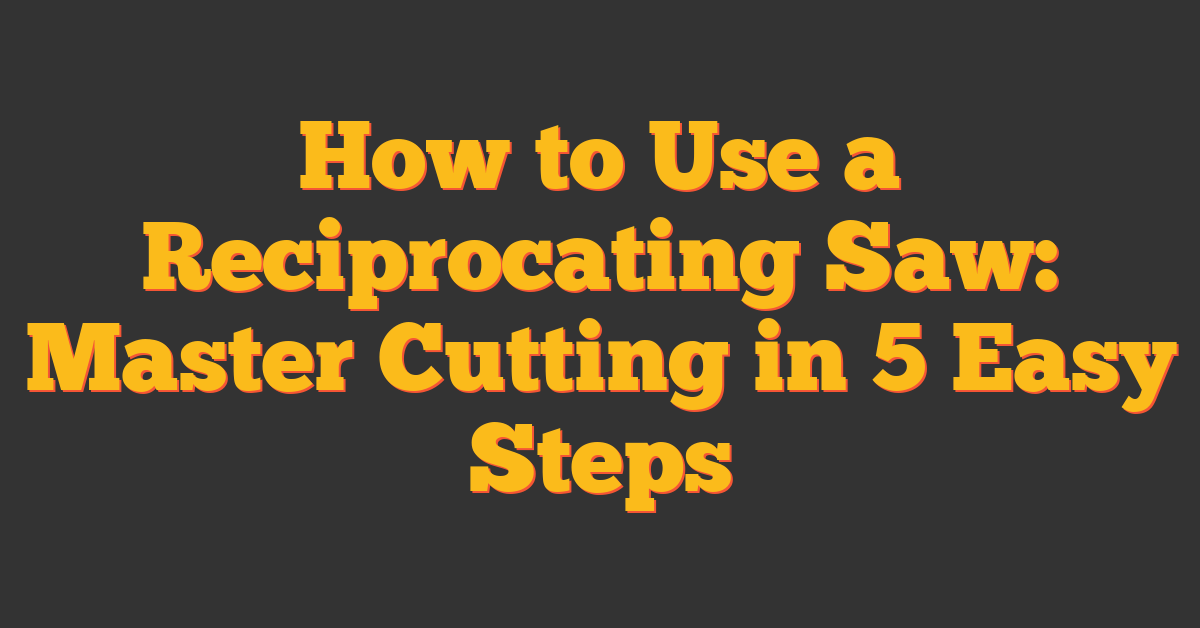Diving into the world of woodworking can be both thrilling and a tad daunting. You’re about to discover the essential hand tools that’ll transform raw lumber into works of art. Think of your hands as the maestros and these tools as the orchestra, creating harmony in wood.
Types of Woodworking Hand Tools
As you embark on your woodworking journey, you’ll find that each hand tool in your arsenal plays a crucial role. Let’s dive into the types of tools you’ll encounter and their unique purposes.
Measuring and Marking Tools are the unsung heroes of accuracy in woodworking. Without precision, even the most elegant projects can falter. Your toolkit will likely include:
- Rulers and tape measures for length assessments
- Squares to ensure perfect angles
- Marking gauges to trace cut lines
Cutting Tools are where the transformation begins. You’ll slice through wood as if it’s butter with the right set. Keep an eye out for:
- Hand saws, with various teeth configurations tailored for different cuts
- Chisels that refine edges and clear out waste
- Planes to smooth and flatten wood surfaces
Shaping Tools permit the release of your creativity. They manipulate the wood into your envisioned form:
- Gouges and carving knives that turn blocks into intricate shapes
- Rasps and files for fine-tuning curves and edges
Joinery Tools are pivotal for assembling your masterpiece. They allow you to combine pieces with finesse:
- Hammers and mallets to drive joints together or chisels into wood
- Screwdrivers for fastening hardware
- Clamps to hold workpieces in place during glue-ups or cutting
Remember, the quality of your tools can significantly impact your work. Invest in well-crafted instruments—they’ll pay dividends in the ease of use and the beauty of your finished pieces. As you advance, your collection will grow, adding specialized tools that complement your skill set. Embrace the journey; with each project, you’ll learn which tools suit various tasks and how they can help you evolve as a woodworker.
Essential Hand Tools for Beginners
Embarking on your woodworking journey, you’ll quickly learn that some tools are indispensable. Starting with the basics, you won’t need an exhaustive collection—just a few key items to get you going. These hand tools not only support a variety of projects but can also grow with your expanding skill set.
Measuring Tape and Rulers
Accuracy is non-negotiable in woodworking. A reliable 25-foot measuring tape and a rigid ruler are your true north. Look for measuring tapes with standout features like wide blades and durable locks—they’ll become your constant companions.
Chisels
You’ll shape, carve, and cleanse the joints with a sturdy set of chisels. Beginners should opt for at least four sizes:
- 1/4 inch
- 1/2 inch
- 3/4 inch
- 1 inch
Ensure they’re made of high-carbon steel for longevity. Consider a sharpening stone to keep them at peak performance.
Hammers and Mallets
A comfortable, well-balanced claw hammer will tackle most nailing tasks, while a wooden or rubber mallet is perfect when a softer touch is needed, especially with your chisels.
Saws
Different cutting tasks require different saws. A quality handsaw is a great starting point for cross-cutting boards and dovetail saws are ideal for fine joinery. For curved cuts, a coping saw is your best bet.
Planes
A reliable smoothing plane finishes surfaces with a finesse that power sanders can’t match. It might take practice to master, but once you do, you’ll be rewarded with glass-smooth finishes.
As you become more comfortable with these basic tools, you’ll start noticing how they serve as extensions of your hands. Woodworking is not just about crafting something out of wood—it’s about feeling the material and understanding how it responds to your touch. Your tools are the medium through which your woodworking story is written, and with each project, your narrative becomes richer and your skills sharper.
The Bench Plane: A Jack of All Trades
When you’re eager to smooth out rough lumber or put the final touches on a slicing board, the bench plane is your go-to ally. This versatile tool, often regarded as the workhorse of the woodworking toolkit, comes into play for an array of tasks that demand precision and finesse.
Basic bench planes range in sizes, commonly designated as No. 4 through No. 7, with each size serving distinct purposes. The No. 4, for instance, is your typical smoothing plane—compact enough for detailed work but robust to tackle general smoothing operations. On the larger end, the No. 7 is utilized as a jointer plane, essential for flattening and straightening edges over long spans of wood. Selecting the right size is pivotal as it greatly affects your control and the outcome of your work.
Mastering the bench plane requires practice. Adjusting the depth of the cut and the alignment of the iron—ensuring it’s sharp and set just right—is key to avoiding tear-outs or uneven surfaces. Don’t be surprised if it takes a few tries to get the feel for the right settings and movements.
Beyond size and technique, maintenance is essential for your bench plane’s longevity. You’ll want to habitually clean and oil it to prevent rust and ensure smooth operation. And of course, keep that blade sharp; a dull plane iron will not only give poor results, but it can also make woodworking more cumbersome than it needs to be.
Remember, every pass with the bench plane allows you to peel away millimeters of wood to reveal the project’s true form. It’s a gratifying process that emphasizes the magnitude of manual skill in the craft of woodworking. In your hand, the bench plane isn’t just a tool—it’s a bridge between rough material and finished masterpiece.
Get a Grip with Hand Saws
As you delve deeper into the world of woodworking, you’ll find that a sharp, dependable hand saw is as crucial as any other tool in your arsenal. Here’s where you get a real feel for the wood—by making those precise cuts that power tools can’t always match. Each saw has its personality, and you’re about to make several new friends.
Hand saws are characterized by their tough, serrated blades and the meticulous care they need to stay efficient. You’ll want to start with a few staples:
- Crosscut saws, tailored for cutting across the wood grain
- Rip saws, which cut along the grain
- Back saws, including the dovetail saw, renowned for their precision in joinery work
- Coping saws, perfect for intricate and curved cuts
One of the first things you’ll appreciate is the tactile feedback; you’ll sense the texture and grain of the wood as you guide the saw through the material. The resistance of the wood, the rhythm of your strokes, and that satisfying sensation of the saw teeth biting into fresh lumber—it’s woodworking at its purest.
As with all tools, your hand saws demand respect and upkeep. Regular sharpening and rust prevention are non-negotiable if you aspire to seamless cuts. You might not love maintenance at first, but trust this: There’s a meditative quality to the simple act of sharpening a saw that many woodworkers grow to love.
Remember, while bench planes are about fine finishing, hand saws are all about the cut. Combined, they bring rough lumber to its final form. Your mastery over these tools will pave the path to extraordinary projects. Keep practicing, and enjoy every cut, every shave, as your skills grow and your projects take shape beneath your hands.
Chisels: The Precision Tools
Imagine you’re looking for intricate detail and precision in your woodworking projects. You’ll quickly find that chisels are indispensable. These tools might seem simple – a handle and a metal blade – but they’re capable of meticulous work. Picture yourself paring away thin shavings of wood or chopping out precise joints; that’s where chisels shine.
Bench chisels are the most versatile, suitable for both paring and light chopping. You might prefer mortise chisels, with their beefier blades and stout handles, when you’re removing larger chunks of wood for, let’s say, mortise-and-tenon joints. For more detailed and delicate work, go for paring chisels. Their long, thin blades are perfect for fine-tuning joints and cleaning up recesses.
Here’s what you’ll find essential when working with chisels:
- Sharpness: Keeping your chisels razor-sharp ensures cleaner cuts and less effort. You don’t want to mangle the wood with a dull blade.
- Control: It’s all in the grip and the angle. Practice gripping the handle with one hand and guiding the blade with the other for perfect control.
- Care: Like your hand saws, chisels require regular maintenance. Keep them clean, rust-free, and sharp.
Woodworking isn’t just about power tools; the soul of your craft lies in the use of hand tools, and chisels are a prime example. They bring a level of craftsmanship to your work that machines can’t replicate. Remember, the key to masterful chiseling is less about muscle and more about finesse and technique.
As you grow more comfortable with your chisels, you’ll begin to appreciate the subtleties of these tools. Each type presents its own feel and function. Butt chisels are shorter, making them a favorite for quick, precise work. Carving chisels, with variously shaped blades, allow for creative sculpting and intricate designs.
Start with a basic set, learn their behavior with different woods, and soon you’ll be reaching for your chisels with a confident smile. Whether it’s sharpening edges or crafting delicate joinery, skills with chisels add a touch of elegance and integrity to all your woodworking projects.
Conclusion
You’ve now got the scoop on the must-have chisels for your woodworking toolkit. Remember, sharpness and control are your best friends as you carve out your niche in this craft. Keep those chisels well-maintained and they’ll help you add that touch of finesse to all your projects. So go ahead, get your hands on these essential tools, and let your creativity take shape!
Frequently Asked Questions
What is the main use of chisels in woodworking?
Chisels are essential for carving, shaping, and detailing wood with precision. They are used for tasks like cutting joints, shaping edges, and cleaning up recesses.
What are the different types of chisels mentioned?
The article distinguishes between bench chisels, mortise chisels, and paring chisels, each designed for specific woodworking tasks and techniques.
Why is chisel sharpness important?
Sharp chisels are crucial because they ensure cleaner, more precise cuts, reduce the effort required during work, and help maintain control to avoid mistakes.
How often should chisels be maintained?
Chisels should be sharpened regularly depending on the frequency of use. After each use, a quick honing can help maintain the edge, while more thorough sharpening may be needed periodically.
What do chisels contribute to woodworking projects?
Chisels contribute significantly to the craftsmanship and finesse of woodworking projects. They allow for detailed and delicate work, elevating the overall quality and finish of the piece.




